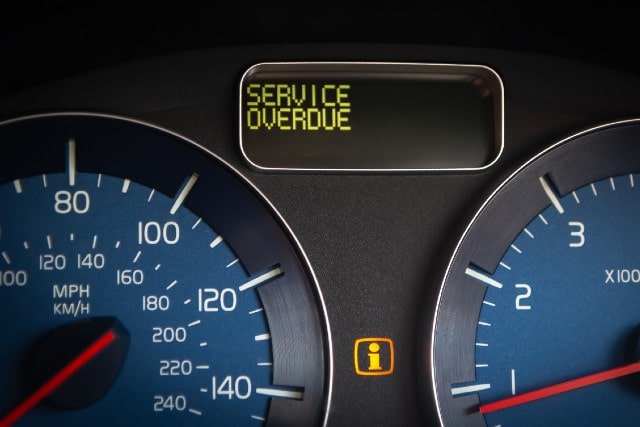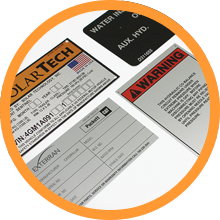Collisions. Mechanical failures. Noncompliance. There’s a long list of risks your fleet is exposed to, and mitigating these risks as much as possible is a top priority for fleet managers. And while you can’t prepare for every potential scenario that may befall your trucks and drivers, a bit of planning can help dramatically reduce the likelihood of common fleet mishaps and snafus.
To give you a head start on managing fleet risk, here are some of our top tips that are easy, actionable, and effective. Even if you don’t follow this list to a tee, incorporating just a few of the following ideas can go a long way toward improving your operations and reducing some of the most common threats facing today’s fleets.
1. Incorporate Fleet Telematics Software
When it comes to managing fleets, the human element is usually the most difficult to control. After all, we’re people, not computers. Though we can be trained, we’re far from programmable, and that’s especially true out on the road.
Enter fleet telematics, which can help monitor driver behavior, route safety, and other risk-related metrics. Data already backs up the significance of telematics in fleet operations – in fact, as of 2019, 86 percent of fleets use telematics. Of those, 43 percent say they’ve seen fewer safety incidents since implementing this driver monitoring technology.
Not up to speed on telematics? Here’s the short and skinny version: telematics is a real-time tracking and monitoring solution that uses data from the vehicle PCM and countless sensors to determine driver behavior, route efficiency, fuel usage, and more. By incorporating telematics, you’ll have an unparalleled look into everything from driving style to idling time.
Having this data at your fingertips can help you quickly determine what, if any, safety training or coaching drivers may need. It can also help you see which routes are more traffic-clogged and therefore more risky. Considering that there was a drop of 22.2 percent in reported crashes among fleet operators using AI route planning, today’s telematic software solutions aren’t just convenient – they can also help you dramatically improve your fleet’s safety scorecard.
2. Automate Compliance Reporting
As any fleet manager knows, compliance is a huge part of managing a fleet. Government entities at every level require some regular cadence of reporting, whether it’s regarding IFTA – the International Fuel Tax Agreement that governs taxes paid on fuels for trucks traveling out of their home state or Canadian province – or the federally-mandated Daily Vehicle Inspection Reports (DVIR) that need to be completed every day. Submit the incorrect information on this paperwork and you could be subject to hefty fines and other penalties for noncompliance.
That’s where automation comes in. The days of needing to complete paperwork reports are over. The digital age has vastly simplified things, and automation now goes one step further by handling most of the process for you.
The benefits of this are numerous. For one thing, an automated system won’t be late submitting documents or make clerical errors. It also enables online cloud storage for past reporting events that can be easily accessed at a later date. Automated systems also cut down on paperwork handling and simplify the communication process, helping to improve accuracy even more.
Automated reporting programs can be singular in scope, such as RAM Tracking’s vehicle tracking and compliance reporting solution, or be bundled in with an all-in-one fleet management software such as the one offered by Fleetio. One thing all solutions have in common? They’ll make you wish you upgraded years ago.
3. Invest in Dashboard Cameras
We’ve all seen footage from dashboard cameras, whether it was a clip of some particularly egregious driving behavior or something funny caught by the all-seeing dashboard eye. But dash cams are more than entertainment – in the event of an accident, they offer irrefutable proof of what happened at the time of the incident. Their footage becomes invaluable when investigators and insurance agents want to know what led to a crash, which party was at fault, and how to proceed legally.
The best commercial dash cams offer several features that will help provide ultimate transparency in the event something should happen. The most important might be the dual-facing camera design that captures footage of the driver as well as the road. Should your driver be accused of distracted driving, an inward-facing camera can accurately corroborate those claims or completely vindicate the driver. With one of these cameras, it’s no longer your driver’s word against someone else’s – the evidence will speak for itself.
We also recommend purchasing a camera that can work with your telematics system to upload incident footage automatically. This ensures you’ll never lose relevant footage that may be needed for legal reasons. It also further streamlines dash cam usage and monitoring, especially if you’re using one in every vehicle in your fleet.
4. Schedule Regular Vehicle Maintenance
Regardless of your fleet’s size or vehicle makeup, you’ll need to do regular maintenance. Routine upkeep isn’t only recommended – it’s mandatory if you want to have reliable vehicles you feel confident dispatching your drivers in. Poorly maintained trucks will put your drivers and other motorists at unnecessarily heightened risk, which is inviting further legal and regulatory trouble.
So, how do you keep up with the maintenance needs when you have a fleet that might number in the dozens? Easy – a fleet management solution. Tracking maintenance with a digital fleet management tool cuts down on guesswork and ensures no vehicle is overlooked. These systems can send automated reminders when vehicles reach certain mileage milestones that call for specific maintenance routines. They can also track the continued cost of ownership for individual vehicles, so you’ll know how much you’re invested into any truck or van.
Tracking tools for fleet maintenance typically tie seamlessly into telematics solutions; they’re often sold as a bundle. The telematics software can not only keep the parent management system abreast of vehicle mileage and upcoming maintenance but also flag dispatchers when internal engine diagnostic codes are triggered. That means you won’t need to wait for a driver to report a check engine light – you’ll know about it as soon as it appears on the dash.
5. Incorporate Asset Tracking Solutions
As a fleet manager, you want to know where your fleet is at all times and which model is which. How to do that? Through rock-solid asset tracking strategies.
From a digital standpoint, telematics and other fleet management tools can be invaluable in giving fleet managers complete visibility as to vehicle whereabouts. GPS tracking is now part and parcel of just about every fleet management program, so you’ll be able to follow drivers along in real time as they traverse their routes and make their stops. In the case of theft, you’ll be able to track exactly where your truck is going, making the thief an easy target for law enforcement.
Along with GPS tracking, it’s also important to affix physical labels to every one of your vehicles. After all, the digital tools are really tailored for the fleet manager – on the ground, drivers, technicians, plant managers, and other stakeholders will want an at-a-glance way to determine which vehicle is which. Without that kind of clarity, any number of preventable errors could occur, from missed maintenance to incorrectly assigned vehicles.
The best option for physical asset tracking is a durable, straightforward, application-specific tag. You’ll need something that can last the lifetime of the asset regardless of weather or storage conditions, such as our durable nameplates and data plates, VIN tags, compliance tags, and rating plate labels.
These solutions should go a long way toward helping you reduce your fleet operational risk, streamline your operations, and improve efficiencies. Saving money and improving driver safety – what’s not to love? Implement these strategies today and watch your fleet risk fall as your ROI improves.



